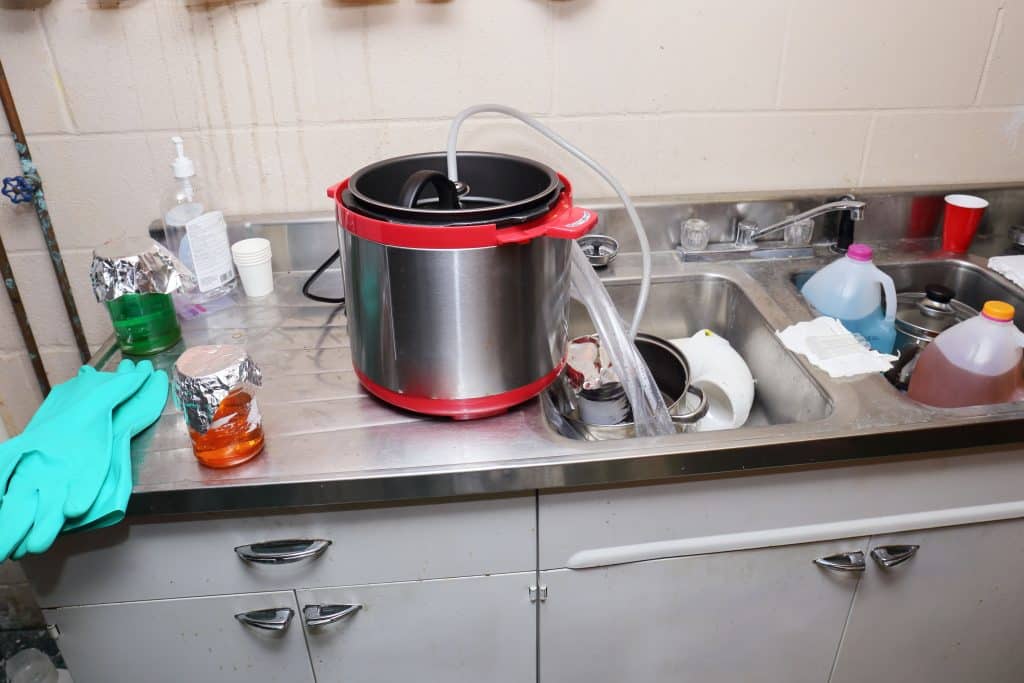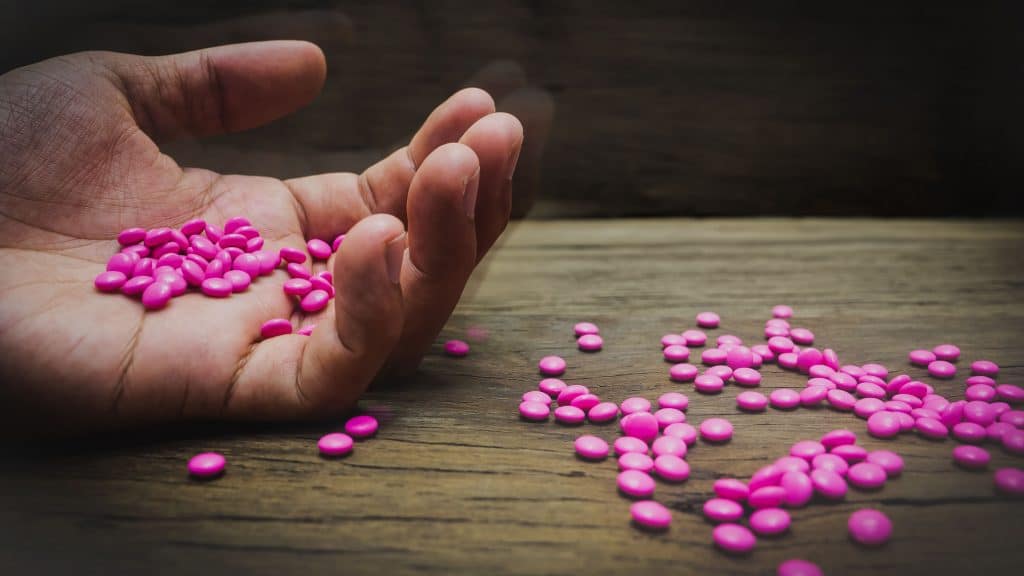Heroin, cocaine, LSD, weed…we know these drugs. Even the lesser used drugs we know, like mescaline, 2C-B, and salvia. But then, there’s always something new popping up. From captagon taking over the Middle East to gas station heroin – a tricyclic anti-depressant sold in corner stores in America; people sure want to get high on something. What’s one of the latest to surface? Pink cocaine, the new rage of South America, and beyond.
Pink cocaine, what’s that?
The answer to that depends on who you ask. Though the main point of differentiation in answers, is concerning what specific ingredients are in it. The first thing to know, though, is that no, pink cocaine is not real cocaine; and in fact has nothing to do with that euphoria-bringing, stimulant drug.
Pink cocaine started as nothing more than a pink version of one of the drugs mentioned above, 2C-B. 2C-B was created in 1974 by Alexander Shulgin, the same guy who brought us MDMA, with a new method to synthesize it in 1976. He wrote about both in his book PiHKAL: A Chemical Love Story. PiHKAL stands for ‘Phenethylamines I Have Known and Loved.’ 2C-B is a phenethylamines drug, which means its a central nervous system stimulant.
2C-B is similar to mescaline, and was used in the mid-late 1900’s when psychedelics were legal for therapeutic use. It comes as a white powder, or as tablets, and is generally taken by mouth. It can also be vaped, and snorted (insufflation). It’s a Schedule I drug in the US.
Cool that you made it over. Get all updates by subscribing to the Cannadelics Weekly Newsletter; which also gets you a range of deals on cannabis flowers, vapes & other smoking devices, edibles, cannabinoid products (like HHC), amanita mushroom products, and so much other stuff. Come get the good stuff here!
In the 1970’s the drug was manufactured by German pharma company Drittewelle, and sold under the brand name “Erox”. It was also found at that time under the names “Nexus” and “B-Dub”. When MDMA was illegalized in 1985, 2C-B became a short-lived replacement; and its now often sold as ecstasy, though its not the same thing. When it was first marketed, it was done so as an aphrodisiac, as it does have stimulating and entactogen properties, like ecstasy. Much like MDMA and ecstasy, its recreational use has related largely to the rave scene.
So what’s pink cocaine? According to many sources it’s merely a dyed pink version of 2C-B. Why? Well, perhaps switching up the aesthetic makes people think they’re trying something new and different. Both the worlds of drugs and marketing tell us that people like to try new things, and that the thing that looks ‘cool’ is often the one desired. It goes by different slang names that come from ‘2C-B’, like ‘tucibi’, or ‘tuci’, or ‘tussi’.
Is there another definition for pink cocaine?
So, that’s what it is? Just a pink form of a drug we already knew about? Not exactly. Much like MDMA and ecstasy, things can start going off the mark. The names ‘MDMA’ and ‘ecstasy’ are often used interchangeably; and truth be told, they can technically refer to the same thing: the pure version of MDMA.
More often than not however, while ‘MDMA’ does refer to a pure form, ‘ecstasy’ often refers to a cut version. As in, a lesser quality version that has other compounds in it so the dealer’s batch goes farther, or to make it more powerful to impress clients and keep them coming back.
Think about cocaine. Sure, you can get really pure stuff. But a lot of it isn’t. It’s known to be cut with baby laxatives, boric acid, detergent, aspirin, creatine, and meat tenderizers. It can also have caffeine or amphetamine to increase the intensity. Or drugs like Benzocaine and Lidocaine, which are for pain. The same idea goes for pink cocaine.
While it was originally 2C-B, these days sources say the drug is made from ingredients like ketamine, MDMA, and caffeine, among other compounds. Some versions may include opioids like fentanyl, meth, or amphetamine, as well. The names ‘tucibi’, ‘tuci’, and ‘tussi’ tend to refer more to this drug, and not straight 2C-B, as 2C-B is so infrequently in the concoction anymore. But it used to be.

The origin of pink cocaine
So where did the stuff come from, and when did it make its way to the public eye? It first became big – like it’s namesake – in Colombia, around 2010. Back then it generally did contain 2C-B. It made its way to Colombia not from the States, but from Europe, where it was already a niche but staple drug in the nightclub scene. The rich of Medellin were some of the first to get the drug back to Colombia, where its use proliferated.
It was seen at that time as a more elite drug than the ever-visible cocaine, probably because it was first big among the upper class. It came with a higher price tag than cocaine, which was used more by middle and lower classes. At a certain point early on, it was mixed with pink dye that smelled of strawberries. This helped make it more appealing in general, as it was thought of as harsh and bad-tasting.
2C-B wasn’t in great supply though. It was only a niche drug in Europe, and only small amounts made it to Colombia. This encouraged local vendors to make their own versions; and hence, the birth of the pink cocaine that’s sold today, (which often has little-to-no 2C-B in it at all), was born. In fact, actual 2C-B is still not common in Latin America.
Pink cocaine going international
In the next couple years, pink cocaine made its way around Colombia. In mid-2015, it was found through an arrest of multiple traffickers, that the drug was being exported to countries like the US, Panama, Ecuador, Peru and Chile. Around this time it was established by manufacturers that they could use all sorts of ingredients as long as they maintained the look and smell of it, since that’s what the public associated with the 2C-B version. This made it quicker and cheaper to make, lowered prices, and increased exports.
By 2016 it had gotten back to Europe, which is kind of funny in that it was from Europe that the original drug came; and just a few years later, the same area was importing back the weakened, fake version. That year Spain captured nine operators who ran refining labs in Madrid. The labs were creating the drug with ketamine, cocaine, and meth. There is no standard recipe, and individual producers are known for creating their own individual concoctions.
Spain is pretty into it, with reports surfacing late last year that seven were arrested for selling both cocaine and pink cocaine in Madrid and Malaga. When their homes were searched, eight kilos of the pink drug were found. Prior to this, in late August, a bust of Brits in Ibiza, Spain turned up 13 kilos of pink cocaine, thought to have a street value of €2.3 million.

A UN report from late 2022 speaks of some form of the drug being found by law enforcement in the following countries: Austria, Spain, Switzerland and the UK. This was confirmed by Trevor Shine, the director of TICTAC Communications Ltd, a UK organization which identifies and gives information on drugs. He said that the organization “had come across a small number of samples of pink powder or crystals over the last two years,” which “contained MDMA and ketamine, and another caffeine and ketamine.”
He did point out that these findings account for only a tiny fraction of the drugs found, in the neighborhood of 0.5% of tested samples. It’s still generally new there, but in Colombia, where its been around longer, these pink concoctions are significantly more popular.
Though the drug is in Europe, it biggest base is in Latin American countries like Chile, Argentina, Uruguay, Panama, Mexico, Costa Rica, Venezuela, Peru, Bolivia, and Paraguay. As the price plummeted along with the quality, it now attracts a much less rich crowd, with the former users moving on to other drugs.
While 2C-B, like other hallucinogens, isn’t known to cause death, Senior Research Officer of the UK’s Drugs Science (a policy charity) reminds that, like it or not, there are a lot of crazy things out there, and some kind of testing is becoming more and more necessary for recreational users:
“Mixing drugs can be dangerous. For example, mixing two depressant drugs like alcohol and benzos is particularly risky as this can drastically slow down breathing and heart rate. It is good practice for people who may mix drugs to use tools such as TripSit to get some insights into particularly risky interactions. There’s also the ongoing risk that people don’t know what’s in their drugs – this is why we need drug checking services such as the Loop so people can make informed choices.”
Conclusion
Perhaps the biggest takeaway of pink cocaine is that if you want a quality drug, you’ll probably have to pay more. The cutting, cheapening, and replacing of pure compounds leads to low-level drugs, and more danger. Maybe 2C-B is fine, but do you have the slightest clue what’s in your pink cocaine?
Welcome all! Thank you for joining us today at Cannadelics.com; a news source that focuses on coverage of the growing cannabis and psychedelics fields. Come around often to stay up on all important stories; and check out the Cannadelics Weekly Newsletter, so you’re never late to get the news.
The post Pink Cocaine: Colombia’s New Drug Rage appeared first on Cannadelics.
Via https://cannadelics.com/2023/03/24/pink-cocaine-colombias-new-drug-rage/
source https://rosalinaklerkx.weebly.com/blog/pink-cocaine-colombias-new-drug-rage
No comments:
Post a Comment